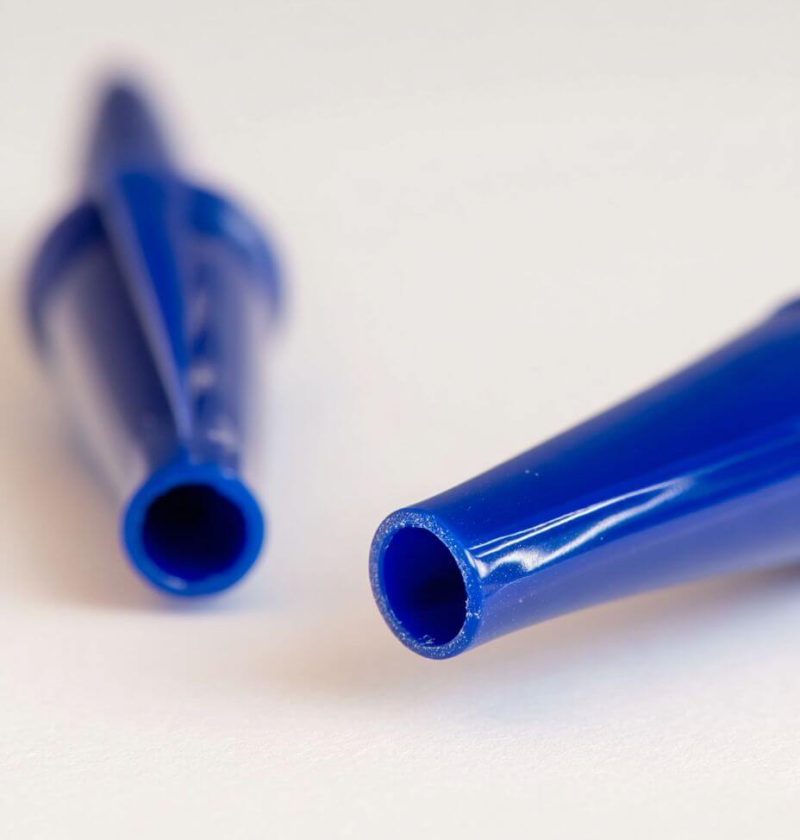You’ve probably clicked a pen cap between your fingers a thousand times, stuck one in your mouth absentmindedly during a meeting (don’t worry, we all do it), or tossed one into the abyss known as your desk drawer. But have you ever stopped to wonder: why do so many pen caps have that tiny hole at the top?
It’s not just a random quirk of design or a fluke in the factory. That tiny little hole actually has a story — and a pretty important one, too.
Let’s dig into it.
The Unsung Evolution of the Pen Cap
Once upon a time, nobody needed pen caps. Quills didn’t exactly need protection — and neither did early dip pens. But as fountain pens, and later ballpoints, became the norm, pen caps were born. Their job? Keep the ink from drying out and protect the tip from getting damaged (or inkying up your purse).
But over time, as pens became mass-produced and more affordable, their design had to become more efficient — and more thoughtful. That’s where the hole comes in.
So, What’s the Deal with That Tiny Hole?
Turns out, that little circle serves multiple purposes. Some practical, some safety-related, and a few that are more subtle than you’d expect.
Let’s break it down.
1. It Can Literally Save a Life
This might be the most important reason — and it’s the one most people don’t know.
Pen caps are one of those things that kids (and yes, distracted adults) love to chew on. Unfortunately, they’re also small enough to be a choking hazard. So, manufacturers started adding holes to the caps. Why?
If someone accidentally swallows the cap, that hole gives them a chance to breathe until help arrives. It’s not a perfect solution, but it’s a life-saving measure — and it’s actually part of safety regulations in many countries now.
So yeah… that tiny hole? It’s kind of a big deal.
2. It Helps Pens Write More Smoothly (Seriously)
Ever had a pen that leaks ink randomly or just stops working after you fly or drive up a mountain? (Okay, maybe that’s a stretch — but elevation and temperature changes do mess with pressure inside a pen.)
The hole in the cap helps equalize pressure so the ink doesn’t splurt out like a tiny ink volcano. It keeps things flowing evenly, so your pen writes smoothly — no leaks, no clogs, no drama.
Save This Recipe
3. It Actually Saves Plastic (and Money)
From a manufacturing standpoint, that hole is smart design.
Less plastic = lower costs. And in mass production, even saving a fraction of a gram per cap adds up fast. Plus, having a vent can actually make the mold release cleaner and faster, so production’s more efficient.
So in a way, that little hole is also an unsung hero of the office supply budget.
4. It’s Part of the Pen’s Look
Not all reasons are technical. Sometimes, it’s just about aesthetics.
Some brands use that hole as part of their signature design. It adds a minimalist touch, breaks up the shape, or gives the cap a sleeker silhouette. Others use the hole as a spot for threading lanyards or keychains — handy if you’re someone who always loses pens.
It might seem like a small detail, but for designers? Every curve, click, and hole is part of the product’s personality.
But Wait… Don’t Most People Think It’s Just There for No Reason?
Yep. And that’s kind of the problem.
Most folks have no idea what that hole does. They think it’s random, or just there “because it’s always been there.” Some think it helps dry the ink (it doesn’t). Others figure it’s for decoration — like the button on your jeans that never gets used.
But once you do know, you can’t un-know. And it makes you see that even the tiniest parts of everyday things are full of thoughtful design.
Final Thoughts: The Tiny Hole That Could
So next time you reach for a pen — or casually twirl the cap while daydreaming in a Zoom call — take a second to appreciate that little hole.
It might seem like nothing. But it’s the result of decades of design evolution, a nod to both form and function, and a quiet little lifesaver hiding in plain sight.
Sometimes, the smartest solutions are the ones you never even notice.

